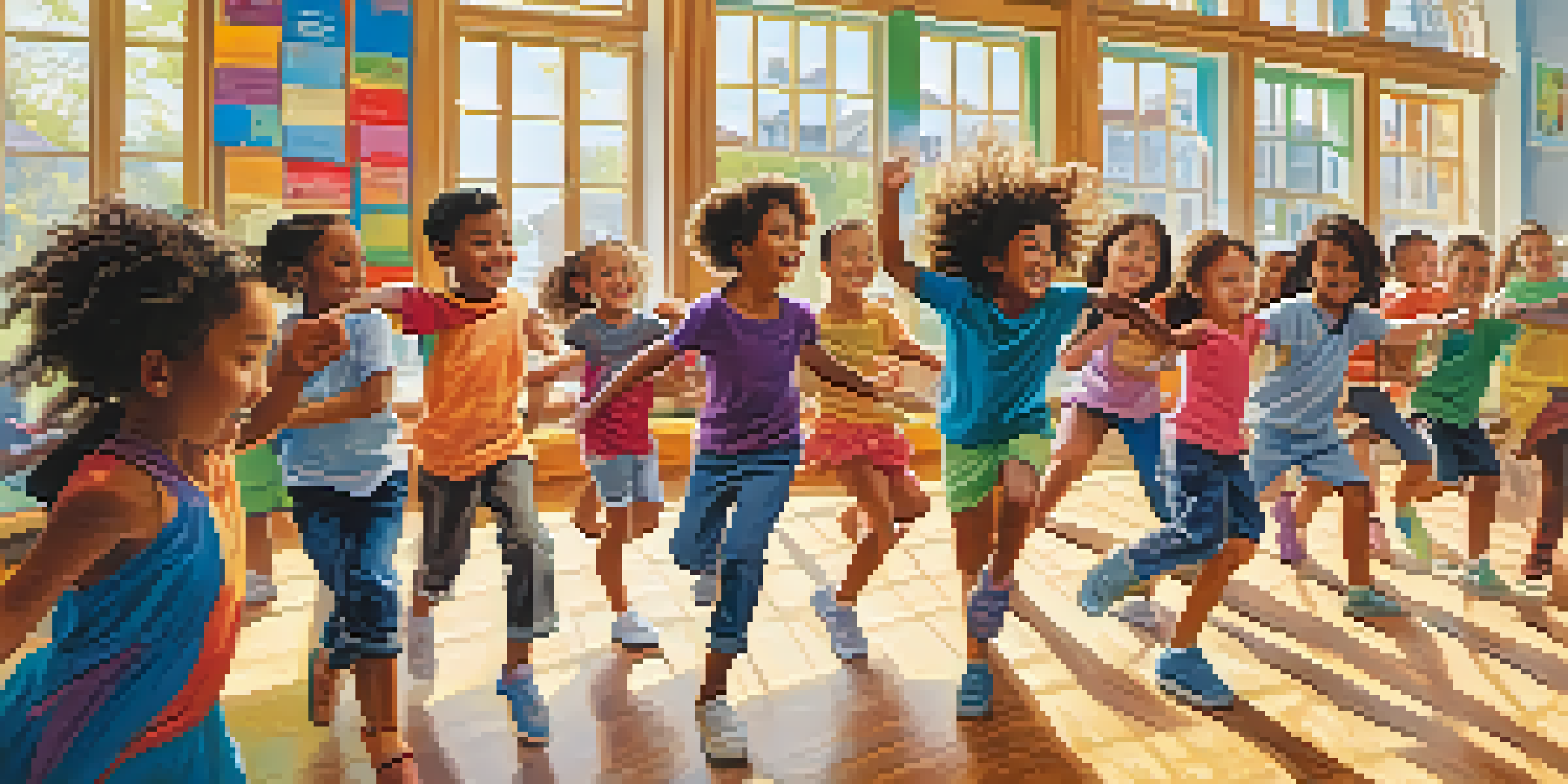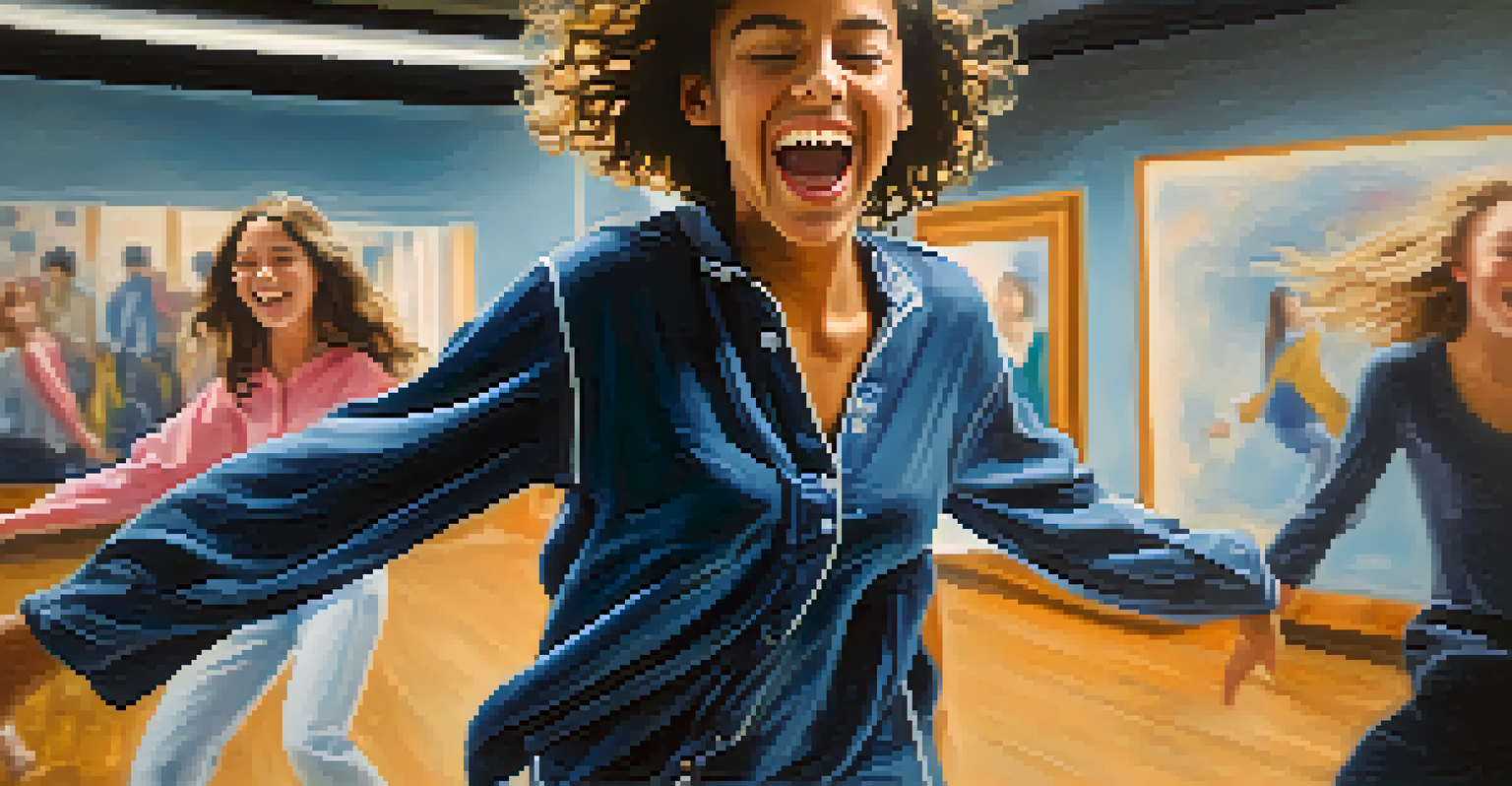Dance as a Tool for Social and Emotional Learning in Schools

Understanding Social and Emotional Learning (SEL)
Social and Emotional Learning, or SEL, focuses on developing skills that help students manage emotions, set goals, and establish positive relationships. It’s about nurturing the whole child, not just their academic abilities. SEL can enhance students' resilience and adaptability, crucial traits in today’s world.
Dance is the hidden language of the soul.
At its core, SEL teaches students to recognize their feelings and those of others. This understanding lays the groundwork for empathy, which is essential for fostering a supportive classroom environment. When students engage in SEL, they learn how to communicate effectively, resolve conflicts, and make responsible decisions.
Incorporating activities like dance into SEL programs can make these lessons more engaging. Dance not only gets students moving but also encourages them to express their emotions creatively. This combination can lead to deeper connections among peers and a more cohesive classroom atmosphere.
The Benefits of Dance in Education
Dance offers a unique approach to learning that combines physical activity with emotional expression. Engaging in dance can boost students' confidence and self-esteem as they learn new movements and techniques. This boost is particularly helpful for students who may struggle in traditional academic settings.

Moreover, dance fosters teamwork and collaboration, essential components of social learning. When students dance together, they must communicate and work in sync, helping to build trust and camaraderie. These experiences can translate into better relationships in the classroom and beyond.
SEL Enhances Emotional Skills
Social and Emotional Learning (SEL) develops crucial skills like empathy, communication, and decision-making, nurturing the whole child.
Additionally, dance can serve as a powerful stress reliever. The physical activity involved releases endorphins, contributing to a more positive mood. This emotional uplift can be beneficial for students navigating the pressures of school, making them more open to learning.
Integrating Dance into SEL Programs
Schools can creatively integrate dance into their SEL programs through structured classes or informal workshops. A dedicated dance teacher or guest artist can guide students in exploring their emotions through movement. This structured approach ensures students understand the connection between dance and emotional expression.
The body says what words cannot.
Incorporating dance into existing SEL lessons can also be effective. For instance, teachers can use dance to illustrate concepts like teamwork or empathy. By moving together, students can physically experience the importance of these skills, making the lessons more memorable.
Moreover, schools can organize dance events or showcases where students can share their work with the community. This not only highlights their learning but also encourages parental and community involvement in school activities. Celebrating these achievements can further enhance students' sense of belonging.
Building Empathy Through Movement
Dance encourages students to step into each other’s shoes—literally and figuratively. By learning different dance styles and cultural movements, students gain insights into diverse perspectives. This exposure fosters empathy, as they appreciate the stories and emotions behind various dances.
For example, a class focused on folk dances from around the world allows students to understand cultural histories and values. This understanding can break down barriers and promote inclusivity within the classroom. When students learn about one another’s backgrounds through dance, they build stronger, more empathetic connections.
Dance Boosts Confidence and Teamwork
Engaging in dance helps students build confidence, fosters teamwork, and creates a positive classroom environment.
Additionally, improvisational dance activities can help students express their emotions in real-time. By reacting to music or movement prompts, students learn to articulate their feelings and respond to others’ emotions. This practice enhances their emotional intelligence, a key component of SEL.
Creating a Safe Space for Expression
Dance classes provide a unique environment where students can express themselves freely. In these spaces, judgment is often set aside, allowing students to explore their bodies and emotions without fear. This safe space is crucial for fostering genuine self-expression and creativity.
Encouraging students to share their personal stories through movement can deepen their connection to the dance. It allows them to communicate feelings they might struggle to express verbally. This practice can be especially beneficial for students who may be shy or hesitant to share their thoughts.
Furthermore, creating an inclusive environment where all students feel welcome to participate is essential. Teachers can encourage collaboration and support among students, strengthening their social bonds. When students feel safe, they are more likely to engage wholeheartedly in the learning process.
Promoting Mindfulness Through Dance
Mindfulness is the practice of being present and fully engaged in the moment, which can be beautifully cultivated through dance. When students focus on their movements and the rhythm of the music, they learn to center themselves. This practice can help reduce anxiety and improve concentration in a bustling school environment.
Incorporating mindfulness exercises into dance routines can enhance this effect. For example, teachers can guide students through breathing exercises before starting a dance class. This grounding technique can help students transition from the hustle and bustle of the school day to a more focused, calm mindset.
Mindfulness Through Dance Practices
Incorporating mindfulness exercises into dance routines promotes self-awareness and emotional regulation among students.
Moreover, dance encourages students to listen to their bodies, fostering greater self-awareness. This awareness can empower students to recognize their emotional states, leading to healthier coping mechanisms. As they learn to navigate their emotions through dance, they build resilience that benefits them in all areas of life.
Measuring the Impact of Dance on SEL Outcomes
To truly understand the impact of dance on social and emotional learning, schools can implement assessments and feedback mechanisms. Surveys or interviews can gauge students' emotional growth and social skills before and after dance programs. This data can provide valuable insights into the effectiveness of these initiatives.
Additionally, observing changes in classroom dynamics can illuminate the benefits of incorporating dance. Teachers may notice improved communication among students or increased participation in group activities. These qualitative observations can complement quantitative data, presenting a holistic view of dance's impact on SEL.

Furthermore, sharing success stories with the community can foster greater support for dance programs in schools. Highlighting individual student growth and collective achievements can inspire others to embrace dance as a tool for learning. This community involvement can lead to more resources and opportunities for students to explore their creativity.